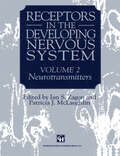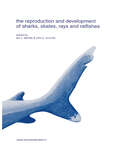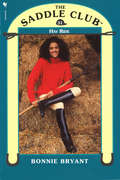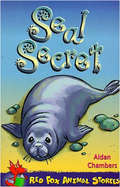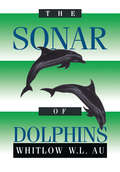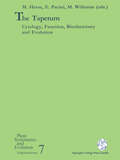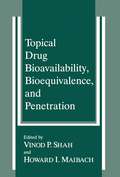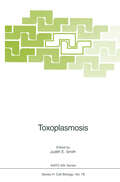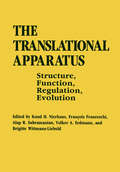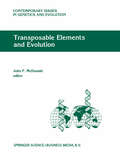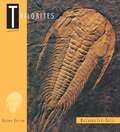- Table View
- List View
Receptors in the Developing Nervous System: Volume 2 Neurotransmitters
by Ian S. Zagon Patricia J. McLaughlinReceptors for cell hormones, growth factors, Fourth, alterations in the development of neu and neurotransmitters are involved in the ral receptors may have profound implications control and modulation of an enormous array for the structure and function of the of biological processes. The development of organism. As much as possible, the reper these receptors has distinct spatial and tem cussions of disrupting the orchestration of poral arrangements, and alterations in this receptor development in the nervous system pattern during embryogenesis can have signi are discussed. In many instances, however, ficant consequences for the well-being of the we are just beginning to learn about some fetus, infant, child and adult. The developing receptors and the authors may not be in a nervous system is particularly dependent on position to discuss the consequences of recep receptors because its period of structural and tor dysfunction. functional organization extends through both In designing these two volumes, we have prenatal and postnatal phases. Moreover, asked major figures in each field to review the receptors are a key element in neural com literature, to apprise the audience of their munication in both the developing and adult latest findings, and to provide a perspective on organism, so that the ontogeny of receptors is the role of receptors in the developing nervous crucial in determining the myriad connections system. These books are intended to sum forming the circuitry of the nervous system.
Regulation of Gene Expression in Animal Viruses (Nato Science Series A: #240)
by Luis Carrasco Nahum Sonenberg Eckard WimmerViruses, being obligatory parasites of their host cells, rely on a vast supply of cellular components for their replication, regardless of whether infection leads to cell death or to the state of persistence. Animal viruses are providing scientists with relatively simple models to study the molecular biology of genome replication and gene expression. Whereas viruses use, in general, pathways of macromolecular biosynthesis common to the host cell, they have a cunning ability to adopt unusual mechanisms of gene expression and gene replication, provided these special pathways offer an advantage in competition for cellular resources. Any study of viral gene expression and replication is likely to lead also to new insights in cellular metabolism. The discoveries of cis-acting regulatory elements in transcription, the phenomenon of splicing of pre mRNA, and cap-dependent and cap-independent initiation of translation may be cited as examples. In addition, animal virus genomes contain elements and encode proteins that are very useful for the design of vectors for gene cloning and expression in mammalian cells. Apart from the basic interest in their biology, viruses have gained notoriety, of course, because they are pathogens. Human animal viruses may cause diseases ranging from the deadly (AIDS) to the benign (common cold). All studies on animal viruses potentially lead to the development of tools for their control, be it through prevention by immunization or treatment with antiviral drugs. Finally, viruses have yielded invaluable reagents in molecular biology as, for example, the vaccinia virus vector for the expression of foreign genes.
The reproduction and development of sharks, skates, rays and ratfishes (Developments in Environmental Biology of Fishes #14)
by John P. Wourms Leo S. DemskiThis volume had its origin in a symposium on the Reproduction and Development of Cartilaginous Fishes that was held at the annual meetings of the American Elasmobranch Society and the American Society of Ichthyologists and Herpetologists in Charleston, South Carolina in 1990. The cartilaginous fishes, class Chondrichthyes, are a large and diverse group of fishes that include approximately 900 to 1100 living species of sharks, skates, rays and ratfishes. Throughout their history, which dates back at least 400 million years, they have been a successful major component of the marine ecosystem. The chondrichthyan fishes occupy a pivotal position in comparative and evolutionary studies of vertebrate reproduction and development. They are the oldest surviving group of jawed vertebrates and they possess both the adult vertebrate Bauplan and the vertebrate program of embryonic development. The major features of the female reproductive system, including its embryonic origin, structure, physiological function, and biochemistry, apparently were established early in vertebrate evolution and are fully developed in chondrichthyan fishes. These features of the female reproductive system have been retained during the evolution of the other classes of vertebrates. Much the same can be said for the male reproductive system. Moreover, viviparity, placental nourishment of developing embryos, and the hormonal regulation of these events made an initial appearance in this group. The 22 articles presented in this volume bring together a wide variety of complementary research by investigators from seven countries, allowing us to broaden the scope and implications of our studies while identifying opportunities for future research. The appearance of a volume on the reproduction and development of cartilaginous fishes is quite opportune. The continued existence of these fishes, which survived the great extinction events of Earth's history, is now threatened by overexploitation unless immediate steps for their conservation are undertaken. Knowledge of their reproduction and development not only is an end in itself, but is of critical importance in devising successful conservation and resource management strategies.
Resource Selection by Animals: Statistical design and analysis for field studies
by B.B. Manly L. McDonald D.L. ThomasWe have written this book as a guide to the design and analysis of field studies of resource selection, concentrating primarily on statistical aspects of the comparison of the use and availability of resources of different types. Our in tended audience is field ecologists in general and wildlife biologists in particular who are attempting to measure the extent to which real animal populations are selective in their choice of food and habitat. As such, we have made no attempt to address those aspects of theoretical ecology that are concerned with how animals might choose their resources if they acted in an optimal manner. The book is based on the concept of a resource selection function, where this is a function of characteristics measured on resource units such that its value for a unit is proportional to the probability of that unit being used. We argue that this concept leads to a unified theory for the analysis and interpretation of data on resource selection and can replace many ad hoc statistical methods that have been used in the past.
Retinal Degeneration: Clinical and Laboratory Applications
by Joe G. Hollyfield, Robert E. Anderson and Matthew M. LaVailDuring the last few years, an explosion of infonnation has come from human genetics and molecular and cell biological studies as to the genetic basis for a number of fonns of inherited retinal degenerations. These disorders have plagued mankind for millennia because they take from otherwise healthy individuals the precious gift of sight. The fundamental advances in recent years have identified a number of genes involved in the groups of diseases which hopefully will lead to discoveries that may, in the not too distant future, allow the prevention and possible cure of some of these blinding eye disorders. To foster a forum for discussions of studies on degenerative retinal disorders, we convened a symposium on retinal degenerations in 1984, at the VIth International Congress of Eye Research Meeting, held in Alicante, Spain. Because of the success of this meeting and the subsequent publication, we have since organized a series of biennial satellite meetings on retinal degenerations for the ISER congresses held in Nagoya, Japan (1986), San Francisco (1988) and Helsinki (1990). Each of these satellite symposium on retinal degenerations was accompanied by a published proceedings volume. This volume is the fifth in this series and contains the proceedings of the Sardinia Symposium on Retinal Degeneration held September 15-20, 1992, as a satellite meeting of the 10th International Congress of Eye Research.
The Retroviridae (The Viruses)
by Jay A. LevyIn this second volume in the series The Retroviridae, the readers are treated to up-to-date reviews on these viruses, which are found in a variety of animal species. The volume begins with important observations on the general fea tures of retrovirus entry into cells as determined by the viral envelope glyco proteins and the cell surface receptors (Chapter 1). Aspects of this virus-cell interaction form the basis for the variety of biologic effects associated with this virus family. A timely review of the oncogenic feline viruses is included next (Chapter 2). These viruses, along with the avian and murine retroviruses (Volume 1, Chapters 6 and 7), have provided valuable insight into cancer induction in other animal species, including humans. Two other major groups of retroviruses, the lentiviruses and the spuma viruses, are introduced in the present volume. Initially these groups, along with oncoviruses, were the three subfamilies in the Retroviridae. This com plex virus family has now been reclassified into seven separate genera (Vol ume 1, Chapter 2). Equine infectious anemia virus is the prototype for a lentivirus (Chapter 5). One of the first viruses discovered in nature (1904), it was only relatively recently recognized as a retrovirus. Lentiviruses are asso ciated primarily with immunologic disorders such as autoimmunity and AIDS (Chapters 3-5), but their association with neurologic disease is also well established (Chapters 4 and 5, and future volumes).
Rotifer Symposium VI: Proceedings of the Sixth International Rotifer Symposium, held in Banyoles, Spain, June 3–8, 1991 (Developments in Hydrobiology #83)
by John Gilbert E. Lubzens M. R. MiracleAs in previous symposia, some current research topics were selected for review and eight invited papers were presented. For the first time a paper was presented on the historical aspects of Rotiferology, covering European research between 1680-1950. A special workshop session was devoted to a debate on a controversial topic: Rotifer Phylogeny. The workshop resulted in a very successful discussion and the integration of scattered evidence and hypotheses on the phylogenetic origin of rotifers, the relationships between major rotifer groups, and the mechanisms of evolution.
Saddle Club 29: Saddle Club Bindup 15 (The\saddle Club Bindup Ser. #No. 15)
by Bonnie BryantSchool is out for the summer, and The Saddle Club has big plans. Lisa, Carole and Stevie have all been invited to Wyoming to work on a ranch and help run a Western riding camp. The girls are looking forward to a great summer of fun and riding until Lisa’s parents break the terrible news: they want Lisa to go with them to Europe for a month. Lisa’s upset and she’ll be missing the chance to work as a ranch hand – how will she survive for four whole weeks without her best friends Stevie and Carole, and horses to ride? And how will Stevie and Carole get on in Wyoming without Lisa?
Saddle Club 30: Saddle Club Bindup 15 (The\saddle Club Bindup Ser. #No. 15)
by Bonnie BryantIt’s Thanksgiving time at Pine Hollow Stables, and the three members of the Saddle Club have each decided to do one good deed to celebrate the holiday. Stevie has offered to do some chores around the stables; Carole’s invited stuck-up Veronica diAngelo to Thanksgiving dinner; but Lisa isn’t sure what her generous act will be – until she realizes that there’s a special horse at Pine Hollow who really needs her.
Saddle Club 31: Hay Ride (The\saddle Club Ser. #No. 31)
by Bonnie BryantIt’s Carole’s birthday, and The Saddle Club is planning an extra-special celebration. They’re having their first boy-girl party, which will include a romantic moonlit hayride!When snooty Veronica diAngelo hears about their plans, she assumes she isn’t invited. And now Veronica is determined to wreck the party – and steal one of The Saddle Club’s boyfriends! Will Carole’s birthday be ruined?
Saddle Club Book 26: Saddle Club Bindup 13 (The\saddle Club Bindup Ser. #No. 13)
by Bonnie BryantWhen Carole finds out that she’s going to Florida for a winter holiday, she’s thrilled. She’ll miss her horse, Starlight, but she knows that Stevie and Lisa, her best friends in The Saddle Club, will take good care of him while she’s away. And her cousin Sheila has made plans for several fun activities, including a day at a popular theme park, a big family reunion and, best of all, the chance to ride along Florida’s beautiful sandy beaches. But Carole’s ride along the sunny coastline turns out to be much more exciting – and frightening – than she ever imagined…
Saddle Club Book 27: Saddle Club Bindup 14 (The\saddle Club Bindup Ser. #No. 14)
by Bonnie BryantSaddle up for more great riding with the girls of Pine Hollow!Sorting through old riding clothes doesn't seem much fun for the three members of the Saddle Club, but then Lisa, Carole and Stevie have the idea of using the clothes to stage a mock wedding for the handsome new stallion at Pine Hollow Stables. And what better day for it than April Fools' Day?
Saddle Club Book 28: Saddle Club Bindup 14 (The\saddle Club Bindup Ser. #No. 14)
by Bonnie BryantSaddle up for some more great riding from the girls of Pine Hollow!No one knows more about horses than Stevie, Carole and Lisa. Or do they? The Saddle Club's knowledge of horses is going to be tested at the next Horse Wise meeting. Among the girls' rivals will be Stevie and Carole's boyfriends, Phil Marsten and Cam Nelson, and it's the opportunity Stevie and Carole have been waiting for to show off for the boys, But when The Saddle Cub starts cramming for the big day, the girls find there's something very odd about their study sheet. It's got all the information they could have wanted - and more...
Seal Secret (Red Fox Animal Stories Ser.)
by Aidan ChambersWilliam resents going on a 'boring' holiday to Wales, but while there he is let into a big secret by Gwyn, a local boy. Gwyn has found a seal pup and has it hidden in a cave. He makes William promise never to tell anyone about it, and plans to breed it on a farm. William is determined to let it go free, and 'borrows' a leaky dinghy to take it out to sea. The story ends with an exciting rescue.
The Sonar of Dolphins
by Whitlow W.L. AuThe extraordinary ability of dolphins to echolocate has fascinated scientists and the public since its discovery in the late 1950's. This is the first book to summarize modern research in this area, and presents a broad synthesis of this very interdisciplinary subject. The author is an internationally-recognized expert on dolphin sonar and is thus in a unique position to bring together research on the physiological, mathematical and engineering aspects of the subject. Of interest to auditory researchers, electrical engineers, acoustical physicists, and mammalian physiologists.
Species, Species Concepts and Primate Evolution (Advances in Primatology)
by William H. Kimbel Lawrence B. MartinA world of categones devmd of spirit waits for life to return. Saul Bellow, Humboldt's Gift The stock-in-trade of communicating hypotheses about the historical path of evolution is a graphical representation called a phylogenetic tree. In most such graphics, pairs of branches diverge from other branches, successively marching across abstract time toward the present. To each branch is tied a tag with a name, a binominal symbol that functions as does the name given to an individual human being. On phylogenetic trees the names symbolize species. What exactly do these names signify? What kind of information is communicated when we claim to have knowledge of the following types? "Tetonius mathewzi was ancestral to Pseudotetonius ambiguus. " "The sample of fossils attributed to Homo habzlis is too variable to contain only one species. " "Interbreeding populations of savanna baboons all belong to Papio anubis. " "Hylobates lar and H. pileatus interbreed in zones of geographic overlap. " While there is nearly universal agreement that the notion of the speczes is fundamental to our understanding of how evolution works, there is a very wide range of opinion on the conceptual content and meaning of such particular statements regarding species. This is because, oddly enough, evolutionary biolo gists are quite far from agreement on what a species is, how it attains this status, and what role it plays in evolution over the long term.
Starvation in Bacteria
by S. KjellebergConcerted efforts to study starvation and survival of nondifferentiating vegeta tive heterotrophic bacteria have been made with various degrees of intensity, in different bacteria and contexts, over more than the last 30 years. As with bacterial growth in natural ecosystem conditions, these research efforts have been intermittent, with rather long periods of limited or no production in between. While several important and well-received reviews and proceedings on the topic of this monograph have been published during the last three to four decades, the last few years have seen a marked increase in reviews on starvation survival in non-spore-forming bacteria. This increase reflects a realization that the biology of bacteria in natural conditions is generally not that of logarithmic growth and that we have very limited information on the physiology of the energy-and nutrient-limited phases of the life cyde of the bacterial cello The growing interest in nongrowing bacteria also sterns from the more recent advances on the molecular basis of the starvation-induced nongrowing bacterial cello The identification of starvation-specific gene and protein re sponders in Escherichia coli as weIl as other bacterial species has provided molecular handles for our attempts to decipher the "differentiation-like" responses and programs that nondifferentiating bacteria exhibit on nutrient limited growth arrest. Severallaboratories have contributed greatly to the progress made in life after-log research.
Sturgeon Fishes: Developmental Biology and Aquaculture
by Tatiana A. Dettlaff Anna S. Ginsburg Olga I. SchmalhausenThis book is the first comprehensive description of development of the Acipenserid fish published in the English language. It con tains the results of more than 40 years of studies by the authors and their colleagues. My own life in science has been intimately related both with the authors and the fish, which are the subject of this book. Therefore, it gives me a great pleasure to present to the English reader an expanded version of the book. Those interested in the history of biology must be well aware of the fact that genetics in the USSR was practically demolished by Lysenko at the session of the Lenin All-Union Academy of Agricultural Sciences in 1948. However, it is much less well known that other fundamental branches of biology were also persecuted at that time, experimental embryology (developmental mechanics) among them. As a result, many embryologists, in cluding the authors of this book, were forced to turn to more ap plied problems, this being the only way to continue research. They had to abandon amphibians and concentrate their efforts on sturgeon.
The Tapetum: Cytology, Function, Biochemistry and Evolution (Plant Systematics and Evolution - Supplementa #7)
by Michael Hesse Ettore Pacini Michiel WillemseThe anther tapetum, present in all land plants, is a highly specialized, transient tissue surrounding the (micro-)spores and/or pollen grains during their development. Any tapetum malfunction causes male sterility. The exact knowledge of tapetum form and function therefore is indispensable not only for basic research, but also and especially in plant breeding and plant genetics. In fourteen contributions by reknown experts, a comprehensive account of the various characters and functions of the tapetum is provided, covering the areas of cytology, cytophysiology, biochemistry, tapetum development and function.
Toxoplasmosis (Nato ASI Subseries H: #78)
by Judith E. SmithProceedings of the NATO Advanced Research Workshop on Toxoplasmosis, held at Fontevraud, France, June 28 - July 2, 1992
The Translational Apparatus: Structure, Function, Regulation, Evolution
by K. H. Nierhaus F. Franceschi Alap Subramanian Volker Alfred Erdmann Brigitte Wittmann-LieboldProceedings of an international conference held in Berlin, Germany, October 31-November 5, 1992
Translational Regulation of Gene Expression 2
by J. IlanThis book, which results from the dramatic increase in interest in the control mechanism employed in gene expression and the importance of the regulated proteins, presents new information not covered in Translational Regulation of Gene Expression, which was published in 1987. It is not a revision of the earlier book but, rather, an extension of that volume witl, special emphasis on mecha nIsm. As the reader will discover, there is enormous diversity in the systems employing genes for translational regulation in order to regulate the appearance of the final product-the protein. Thus, we find that important proteins such as protooncogenes, growth factors, stress proteins, cytokines, lymphokines, iron storage and iron-uptake proteins, and a panorama of prokaryotic proteins, as well as eukaryotic viral proteins, are translationally regulated. Since for some gene products the degree of control is greater by a few orders of magnitude than their transcription, we can state that for these genes, at least, the expression is translationall y controlled. Translational regulation of gene expression in eukaryotes has emerged in the last few years as a major research field. The present book describes mechanisms of translational regulation in bacteria, yeast, and eukaryotic viruses, as well as in eukaryotic genes. In this book we try to provide in-depth coverage by including important examples from each group rather than systematically including all additional systems not described in the previous volume.
Transposable Elements and Evolution (Contemporary Issues in Genetics and Evolution #1)
by J. F. McDonaldIn the summer of 1992 a distinguished group of molecular, population and evolutionary geneticists assembled on the campus of the University of Georgia in Athens, USA to discuss the relevance of their research to the role played by transposable elements (TEs) in evolution. The meeting consisted of a series of informal discussions of issues brought up in papers written by the participants and distributed among them prior to the meeting. These papers and the transcripts of the ensuing discussions are presented in this volume.
Trilobites: A Visual Journey
by Riccardo Levi-SettiLong before dinosaurs roamed the earth, there were trilobites—one of the most striking animals to populate prehistoric seas and whose fossils are favorites among collectors today. From the giant trilobites of Newfoundland to fascinating new specimens from Morocco, Levi-Setti's magnificent book brings these "butterflies of the sea" to life for everyone curious about our remote past This second edition features coverage of a greater variety of trilobites, an improved photographic atlas reorganized to present their evolutionary progression, and over 200 photographs.
